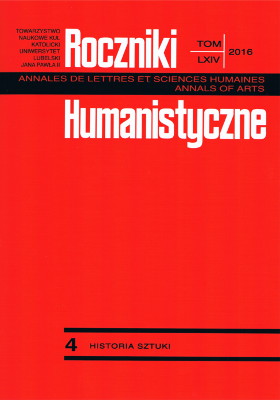Król, prorok czy kapłan ? Charyzmat konsekrowanego władcy w miniaturach ottońskich: treści ideowe i funkcje przedstawień cesarzy dynastii saskiej
A King, Prophet or Priest? The Charisma of a Consecrated Ruler in the Ottonian Miniatures: Ideological Contents and the Functions of Presentations of the Saxon Dynasty Emperors
Author(s): Dariusz TaborSubject(s): Fine Arts / Performing Arts, Visual Arts
Published by: Towarzystwo Naukowe KUL & Katolicki Uniwersytet Lubelski Jana Pawła II
Keywords: miniatures; liturgy; consecration; ruler
Summary/Abstract: The miniatures showing the enthroned emperor are the subject of the article. These are: the miniature showing Otto II from the Registrum Gregorii (Chantilly, Musée Condé, MS 14), two miniatures from the so-called Gospels of Otto III (Munich, Bayerische Staatsbibliothek, Clm. 4453) – one showing Otto III and the other one showing the allegories of the provinces of the empire, two miniatures (Otto II and the provinces) contained in the Gospels bound in the code also containing works by Flavius Josephus (Bamberg, Staatsbibliothek, Class. 79) and the miniature with the figure of Otto III found in the Liuthar Gospels, also called the Aachener Evangeliars (Aachen, Domshatz). The pictures were studied by Percy Ernst Schramm, Piotr Skubiszewski, Henry Mayr-Harting, Wolfgang Christian Schneider, Ludger Körntgen, Hagen Keller and Eric Palazzo. Exaltation of the emperor has its precedents in the Carolingian art. Placing the royal space in the upper gallery of the Palatine Chapel in Aachen and the miniature showing the exalted Charles the Bald in the Count Vivian Bible witness to the Carolingian approach to the person of the ruler. The sources of the consecration of an exalted ruler over bishops and princes in miniatures should be looked for in the theological-political views of the epoch. Hincmar, Archbishop of Reims, Smaragdus, Alcuin and Thietmar of Merseburg define the ruler as one chosen and anointed by God for ruling the people. However, the exaltation of the ruler should be looked for in the liturgy of the consecration of the king that is documented in the Pontifical Romano-Germanique. The most important act of this liturgy is the anointing, unction, practiced during the consecration prayer. The image of the enthroned emperor mirrors the moment of the liturgy in which the consecrated one, after being anointed and handed the regalia, ascends the throne in the apse, led there by the metropolitans and princes. The anointing is derived from the Old Testament consecration of kings, prophets and judges. However, the consecration of a king is different from the consecration of a bishop, presbyter or deacon, so defining the anointed king as sacerdos is unjustified. The image of the bishop consecrated and exalted on the pattern of a ruler also appears in the Ottonian art – in the Psalterium Egberti and the Codex Egberti. The analyzed and interpreted pictures are put in the context of the set of Christological miniatures found in liturgical books where the mentioned miniatures appear. It follows from the above statements that the figure of the ruler as one who listens to God’s Word, and the figure of the ruler who is not a type of Christ, but should be shaped on the pattern of Christ, are the basic features of the contents of all the four miniatures.
Journal: Roczniki Humanistyczne
- Issue Year: 64/2016
- Issue No: 4
- Page Range: 5-32
- Page Count: 28
- Language: Polish

